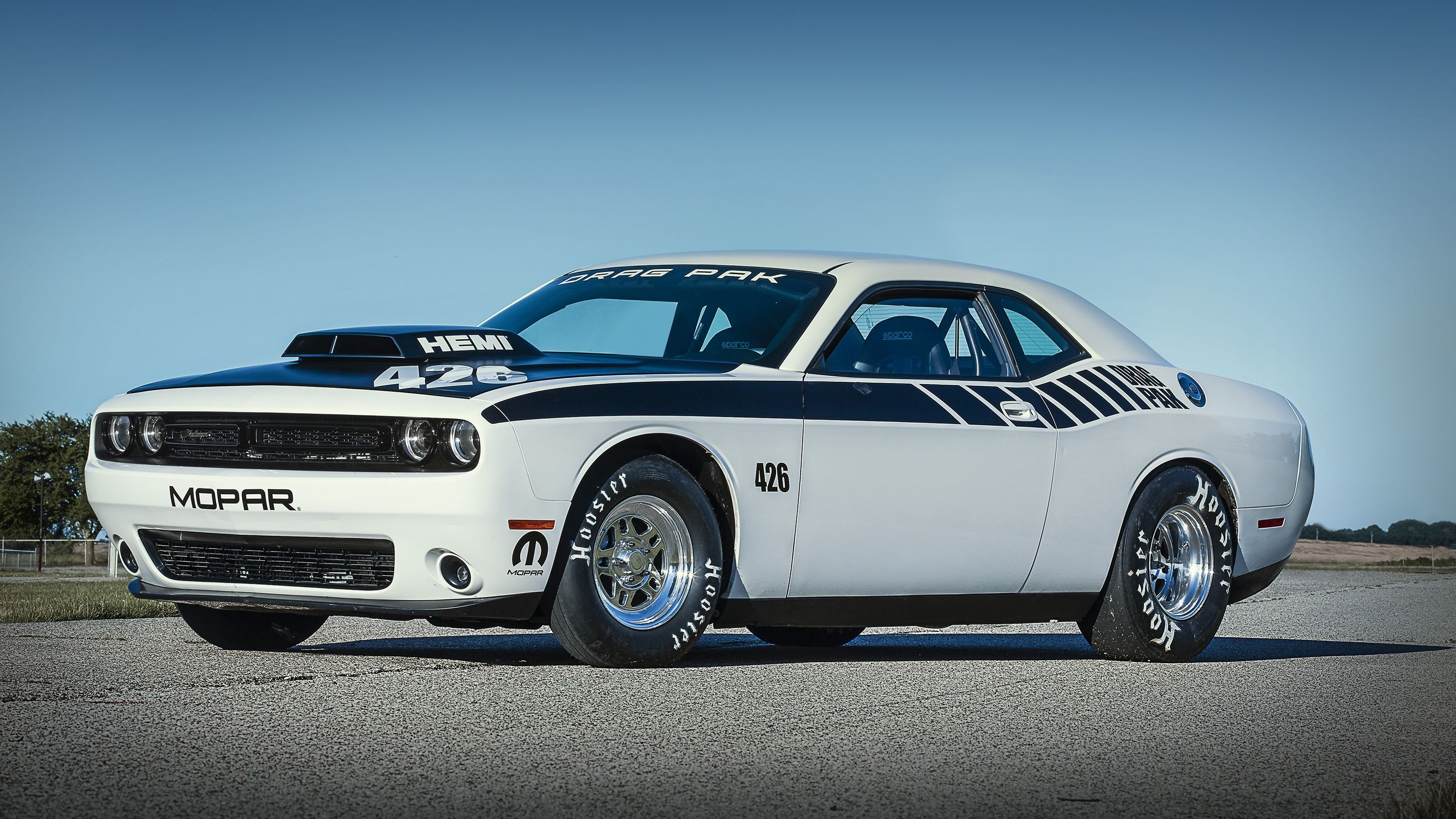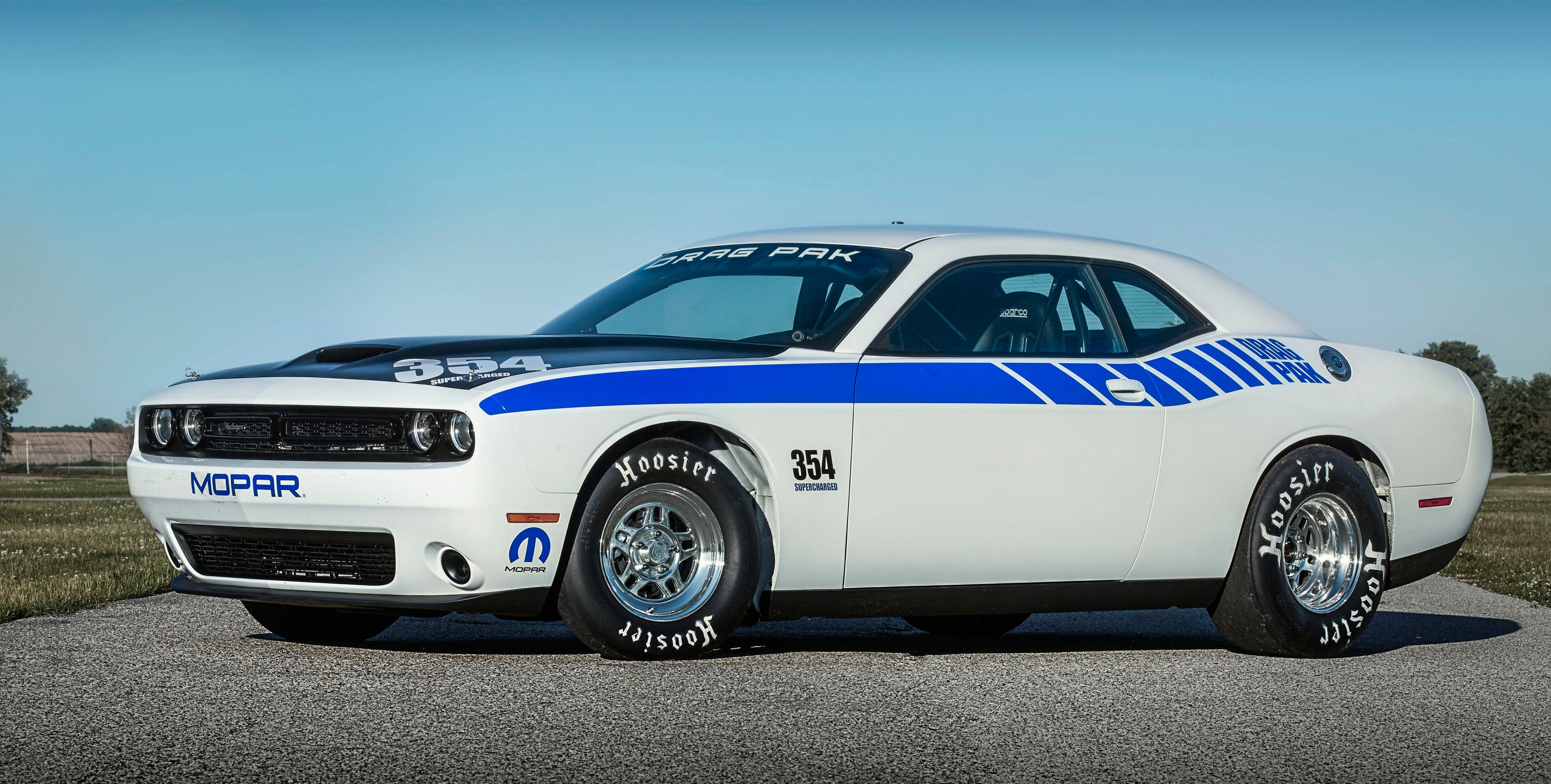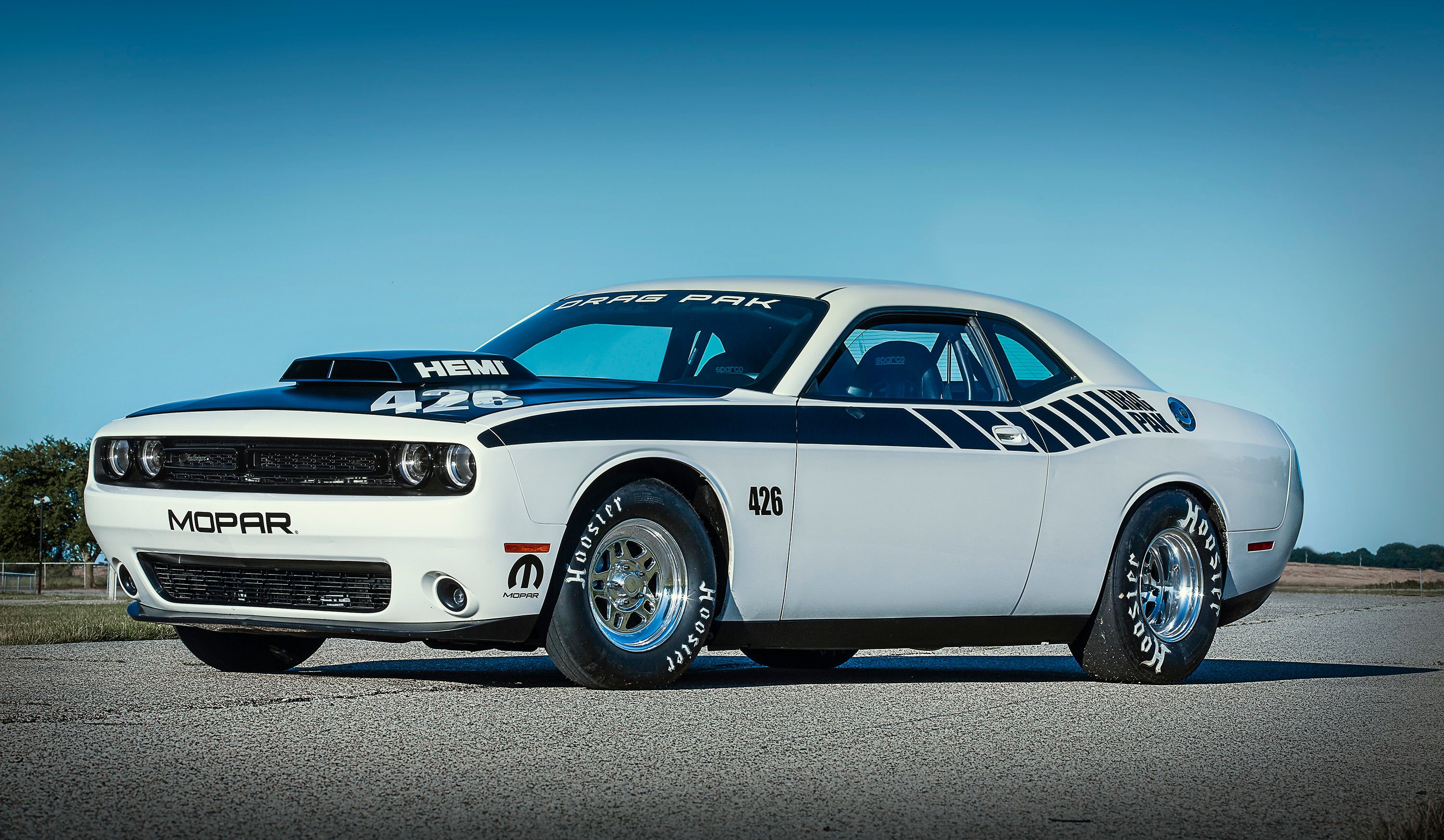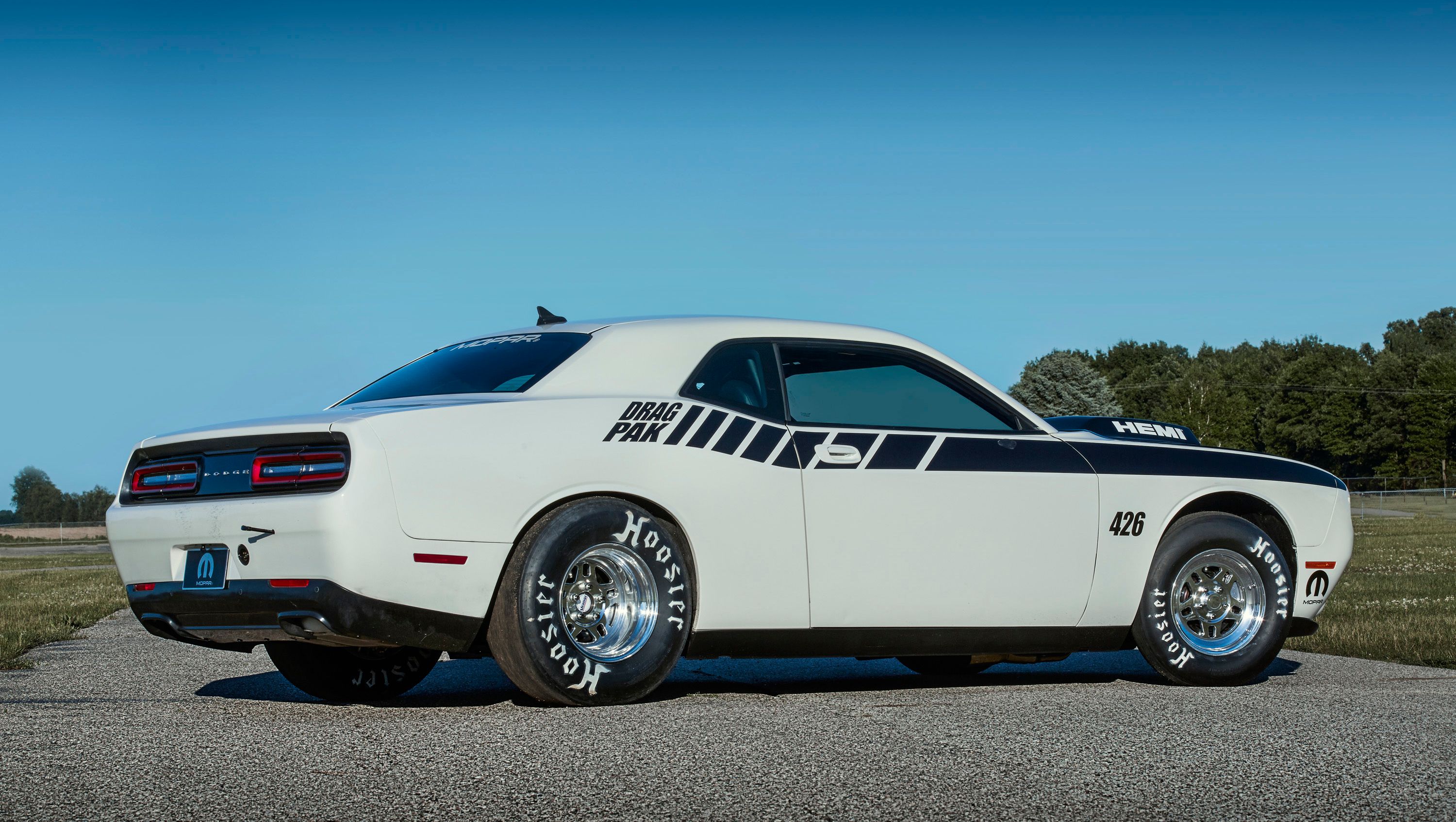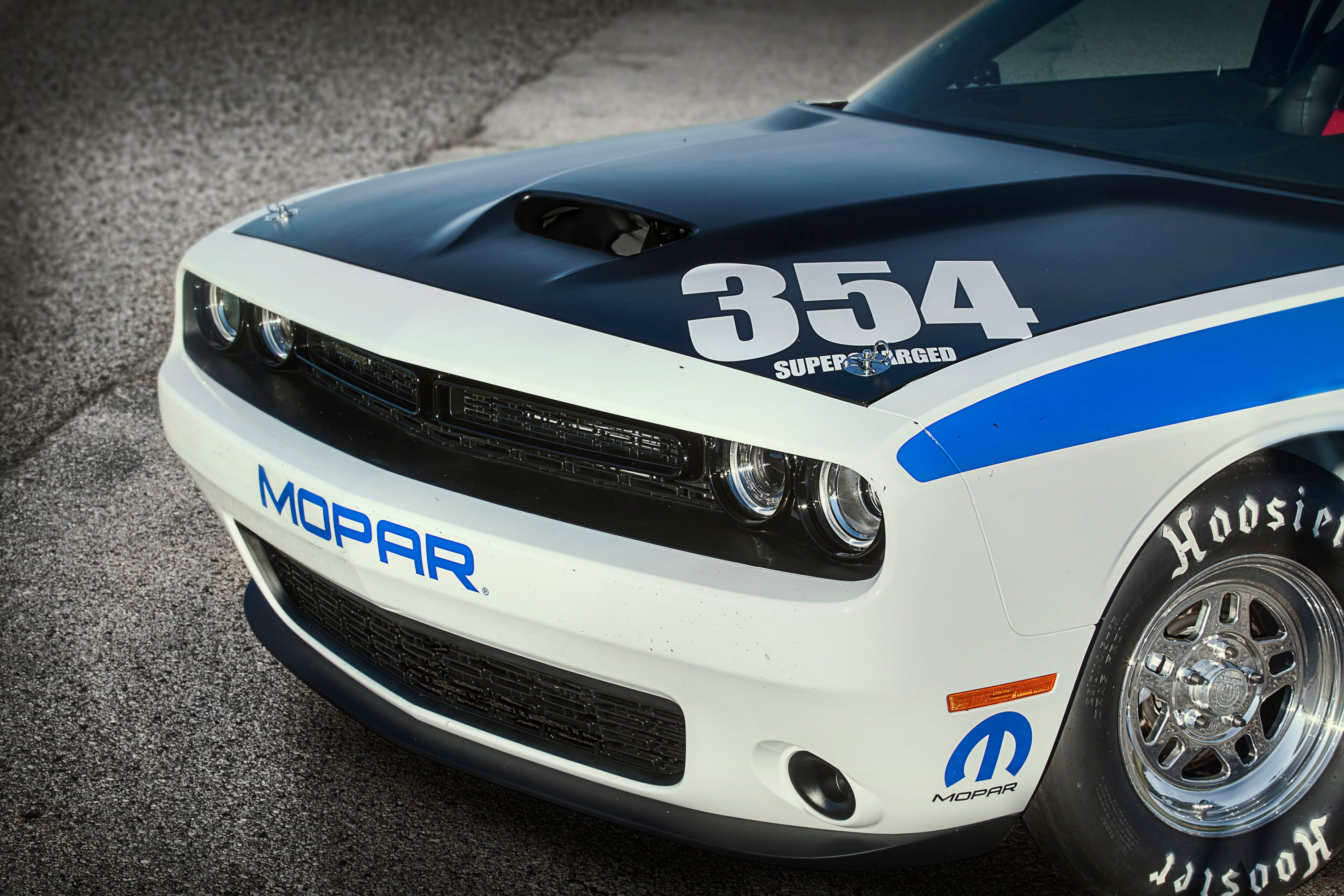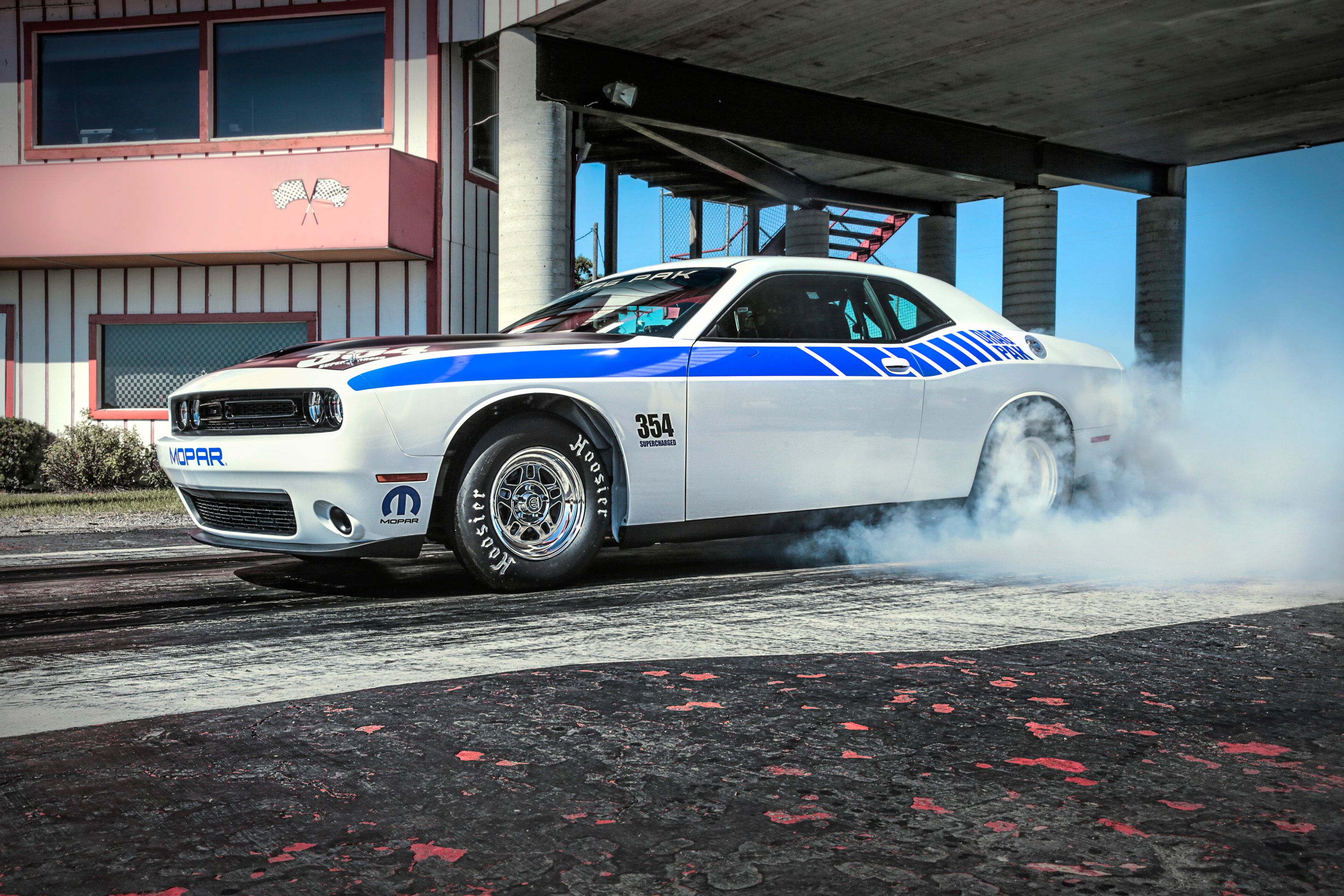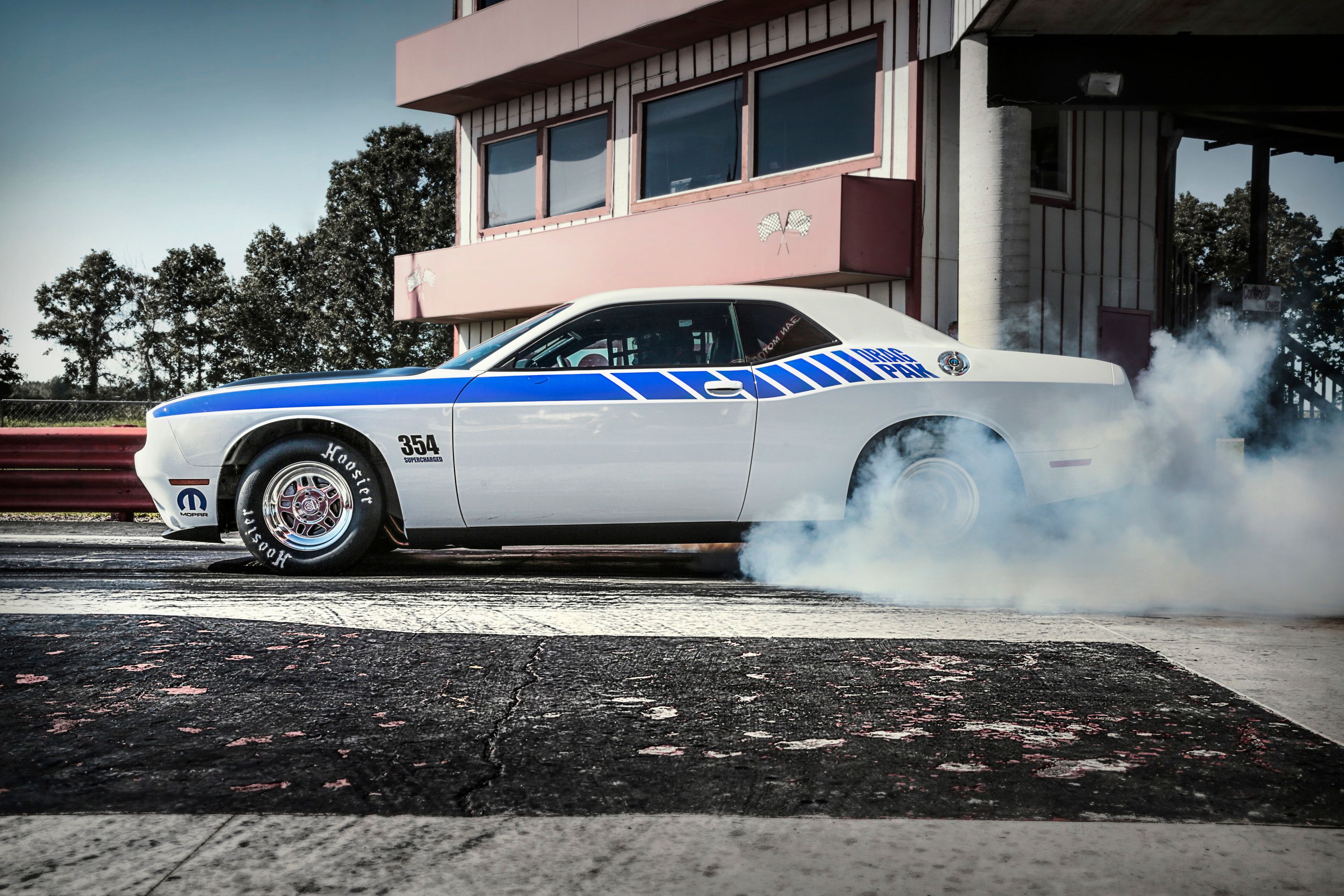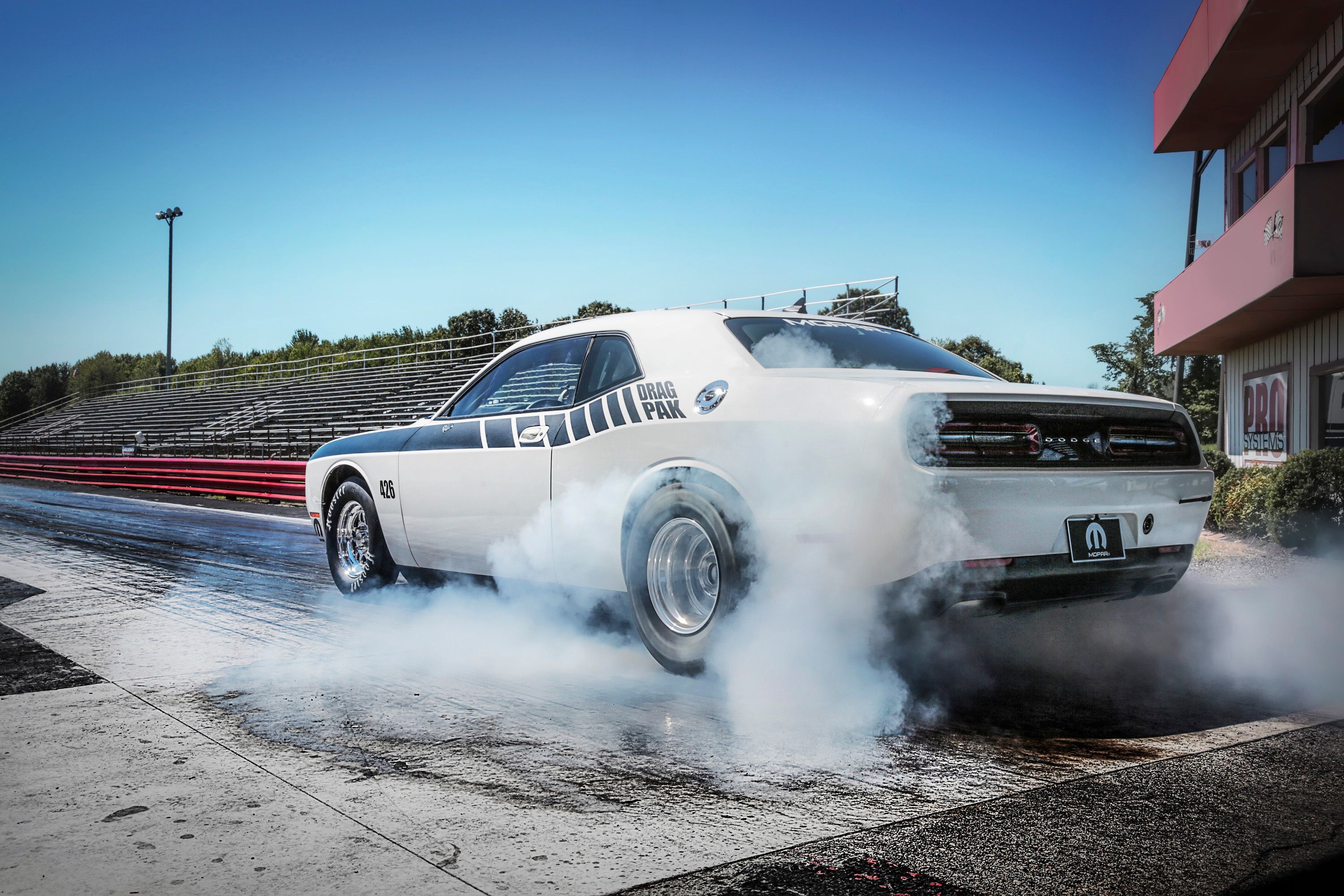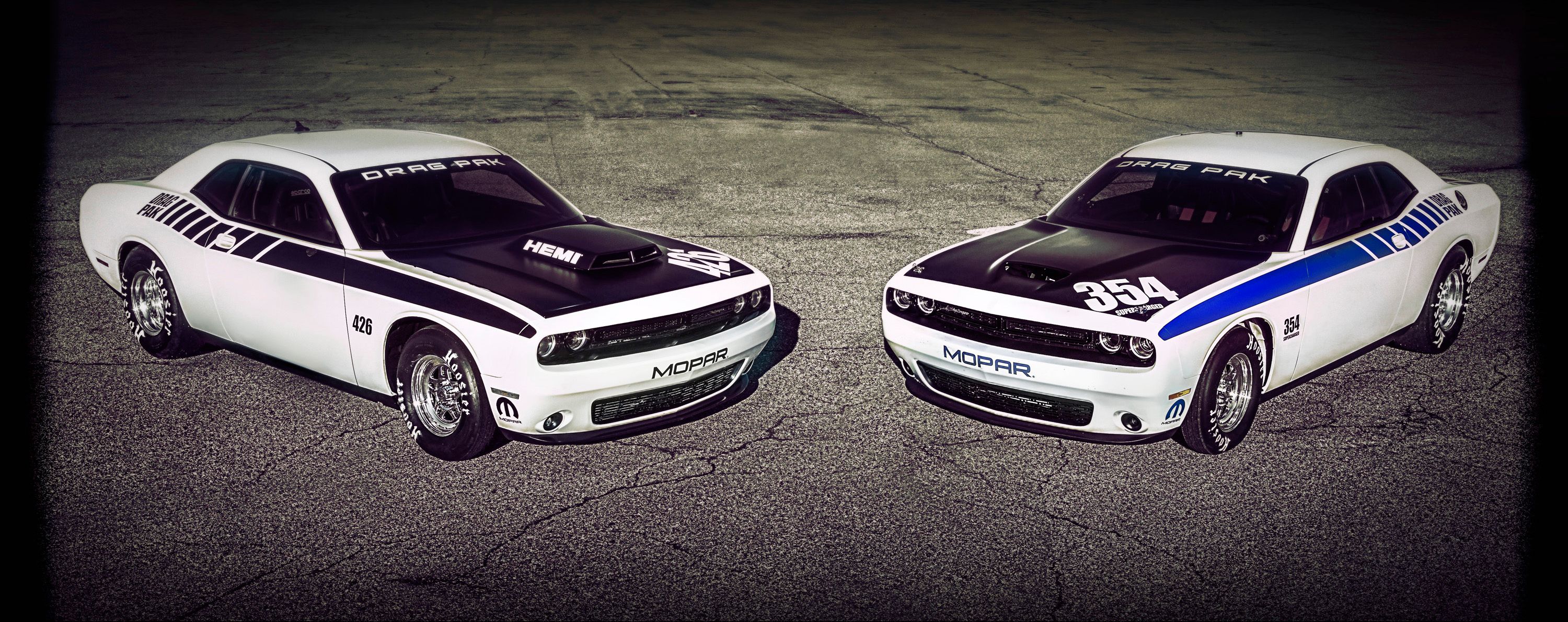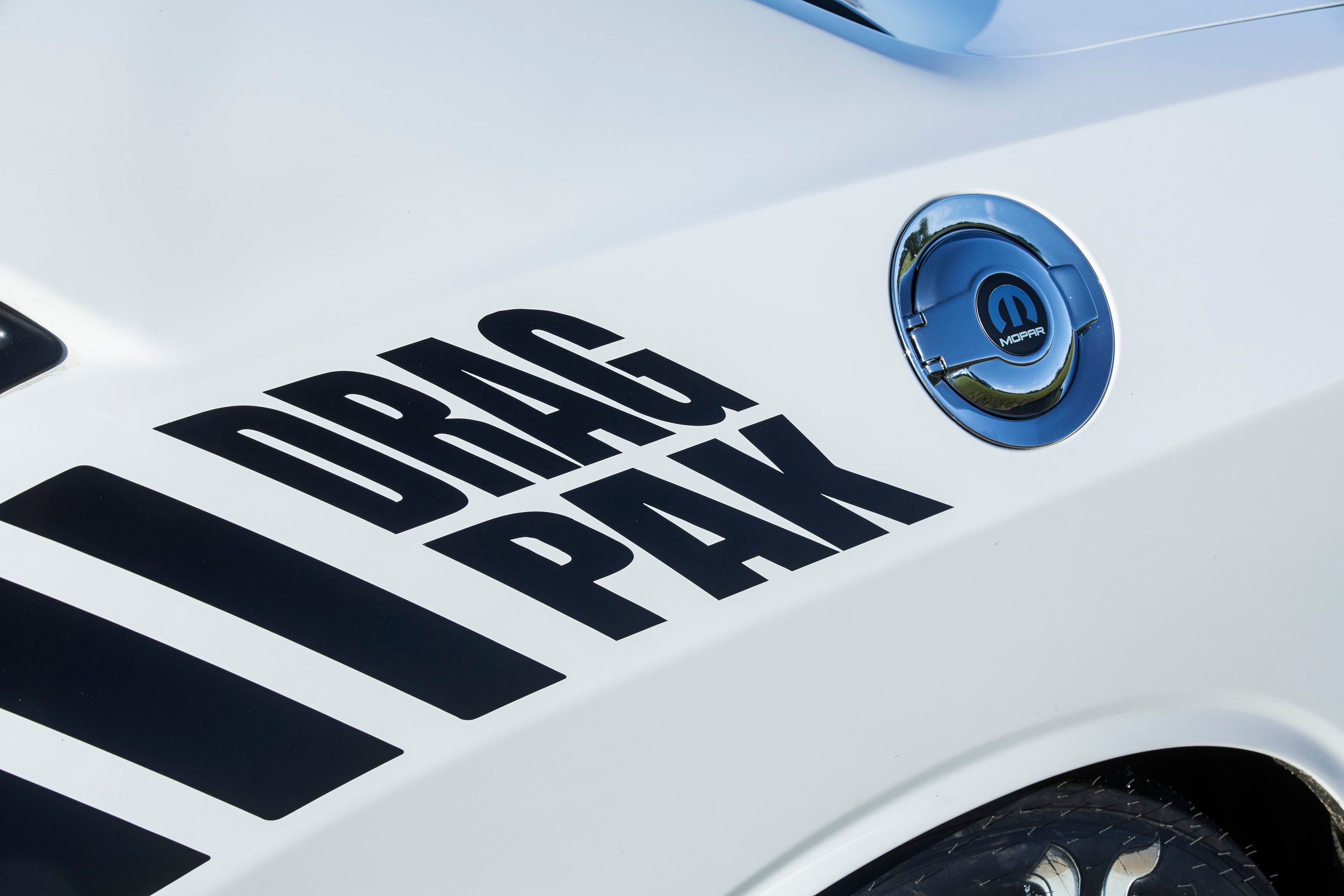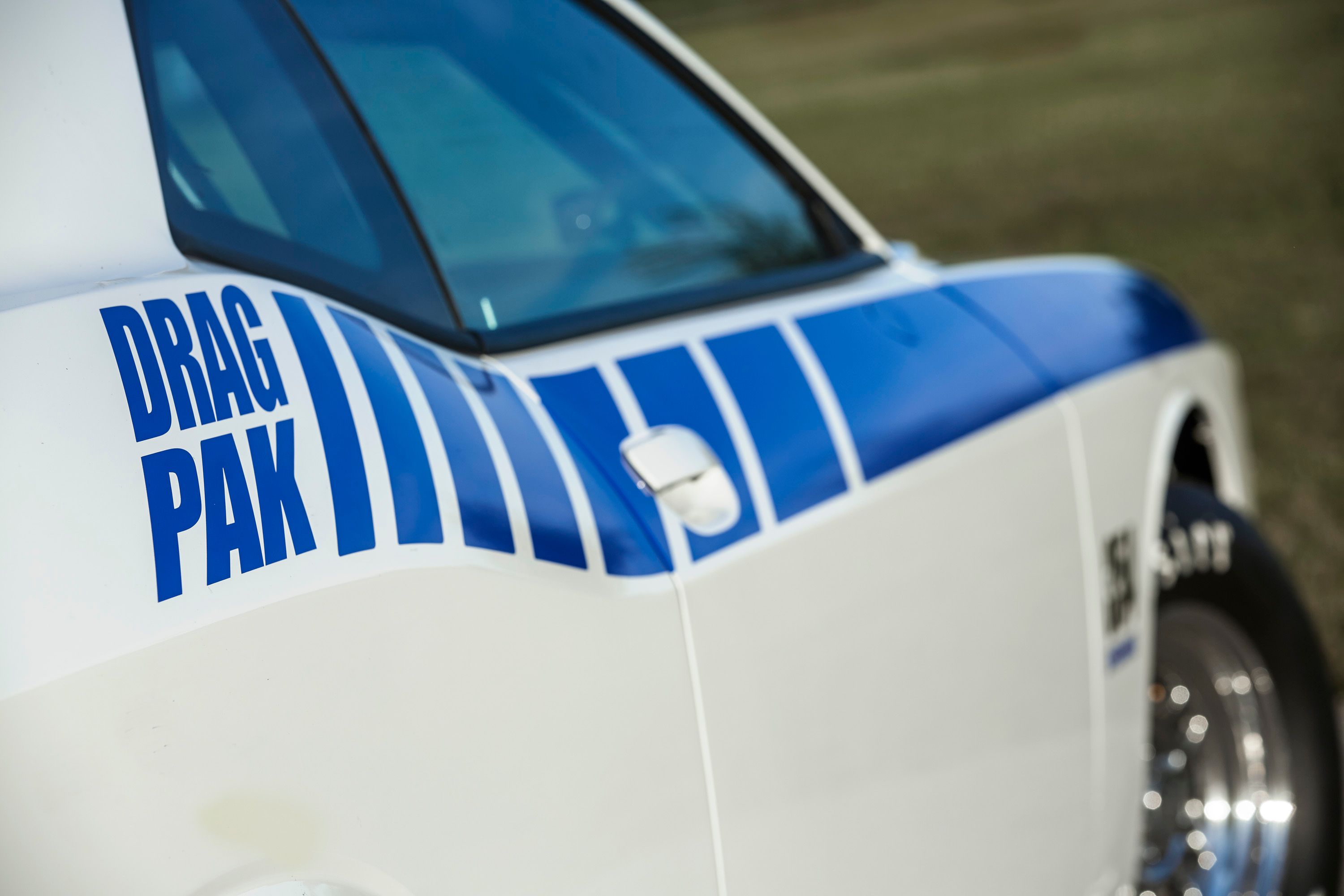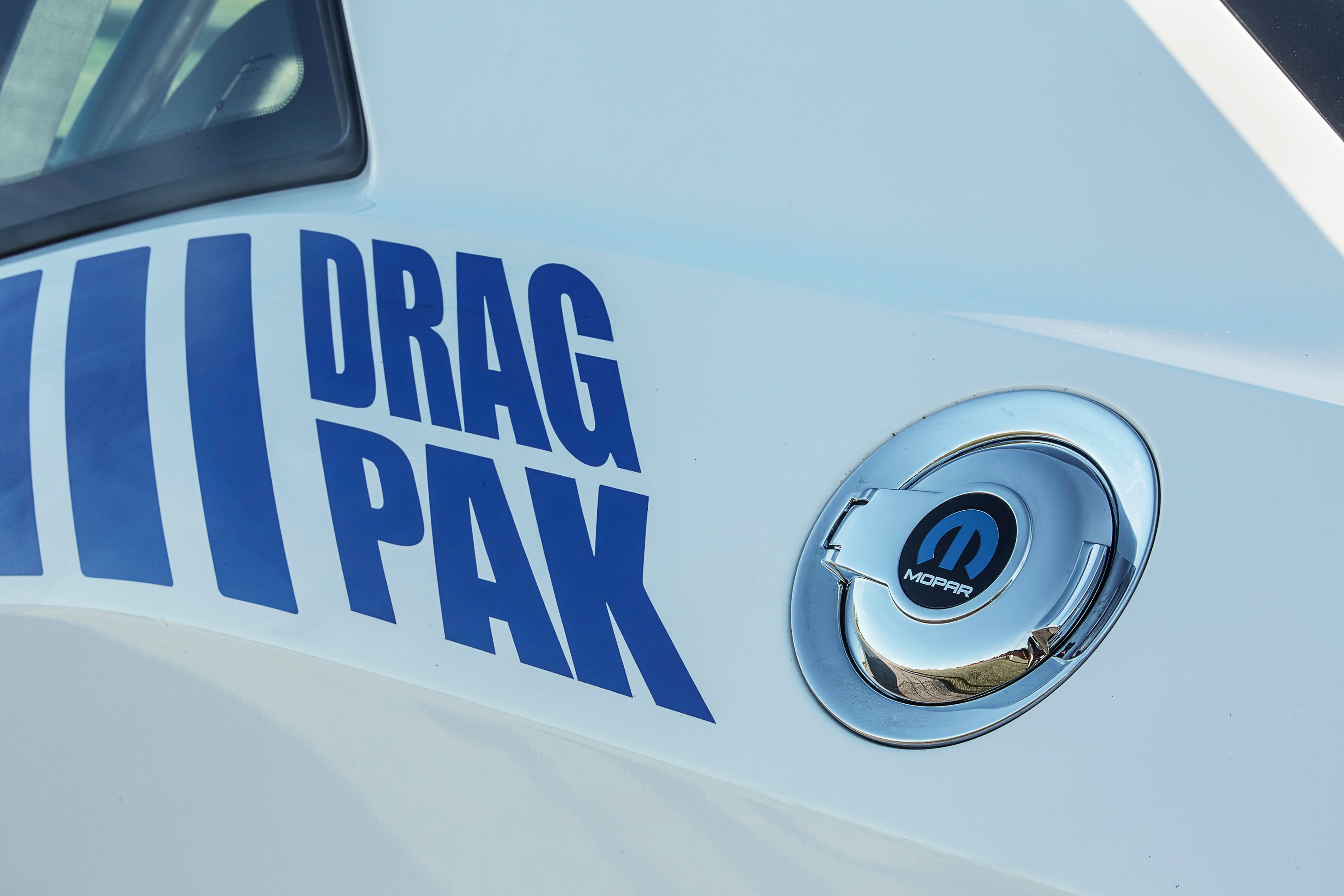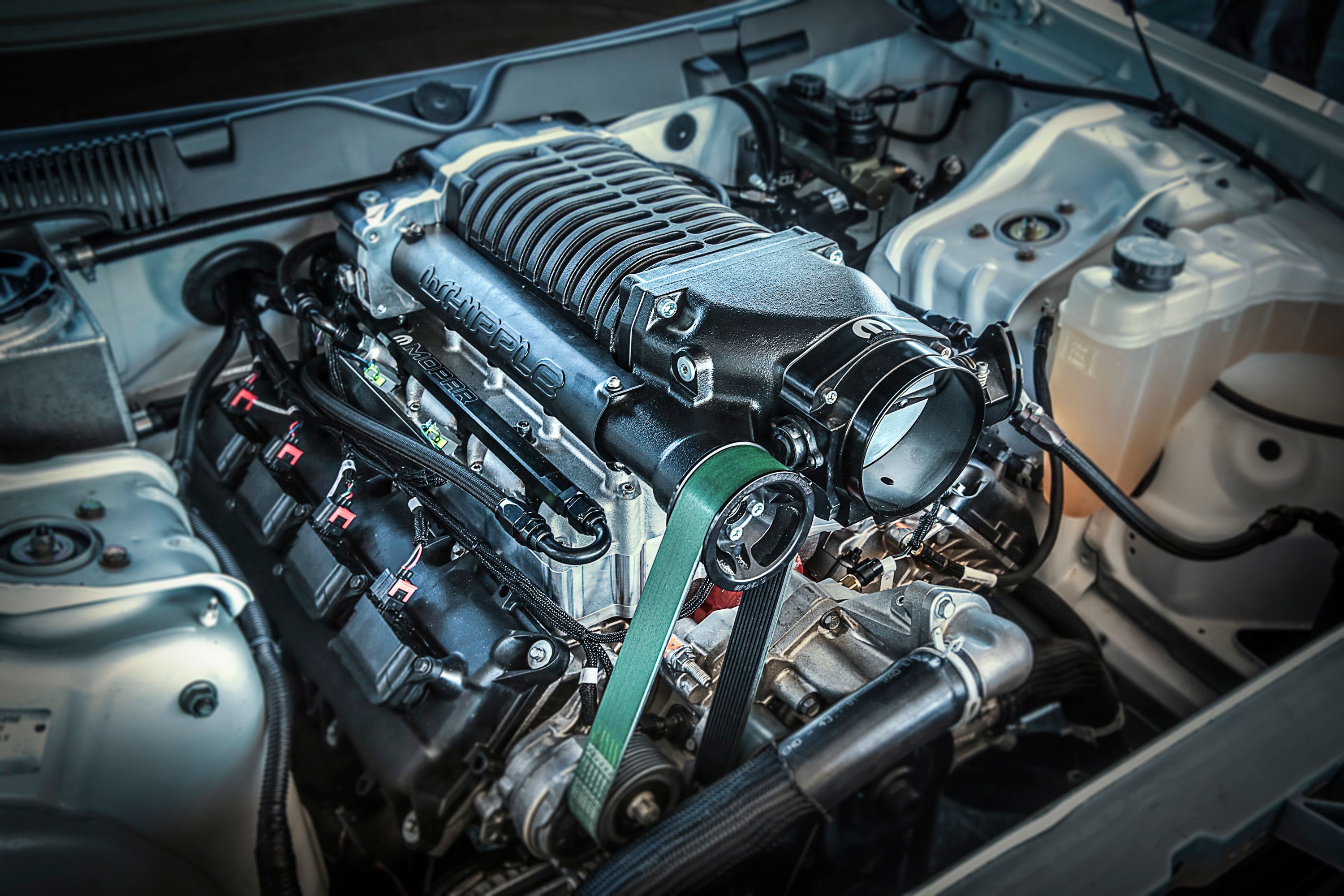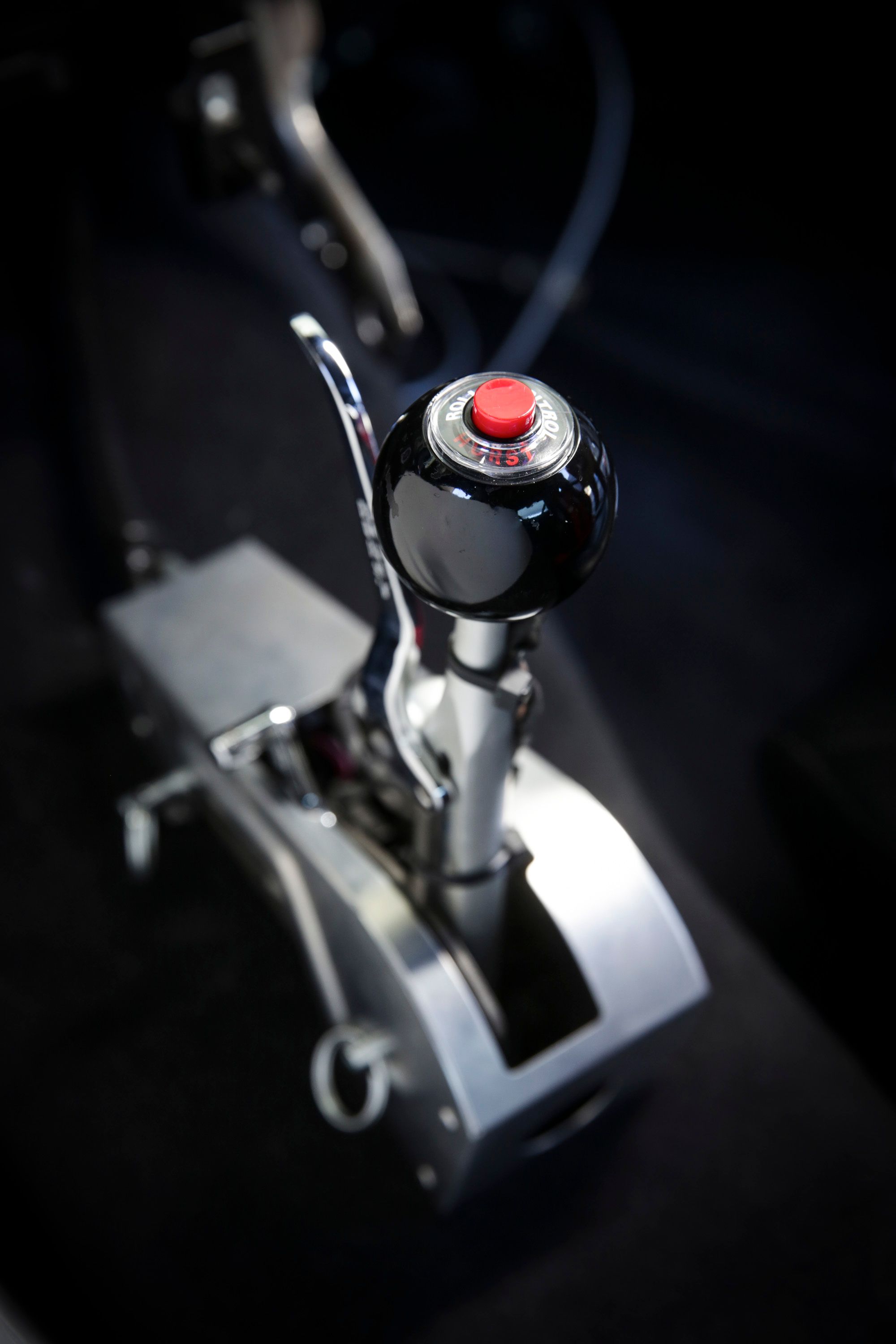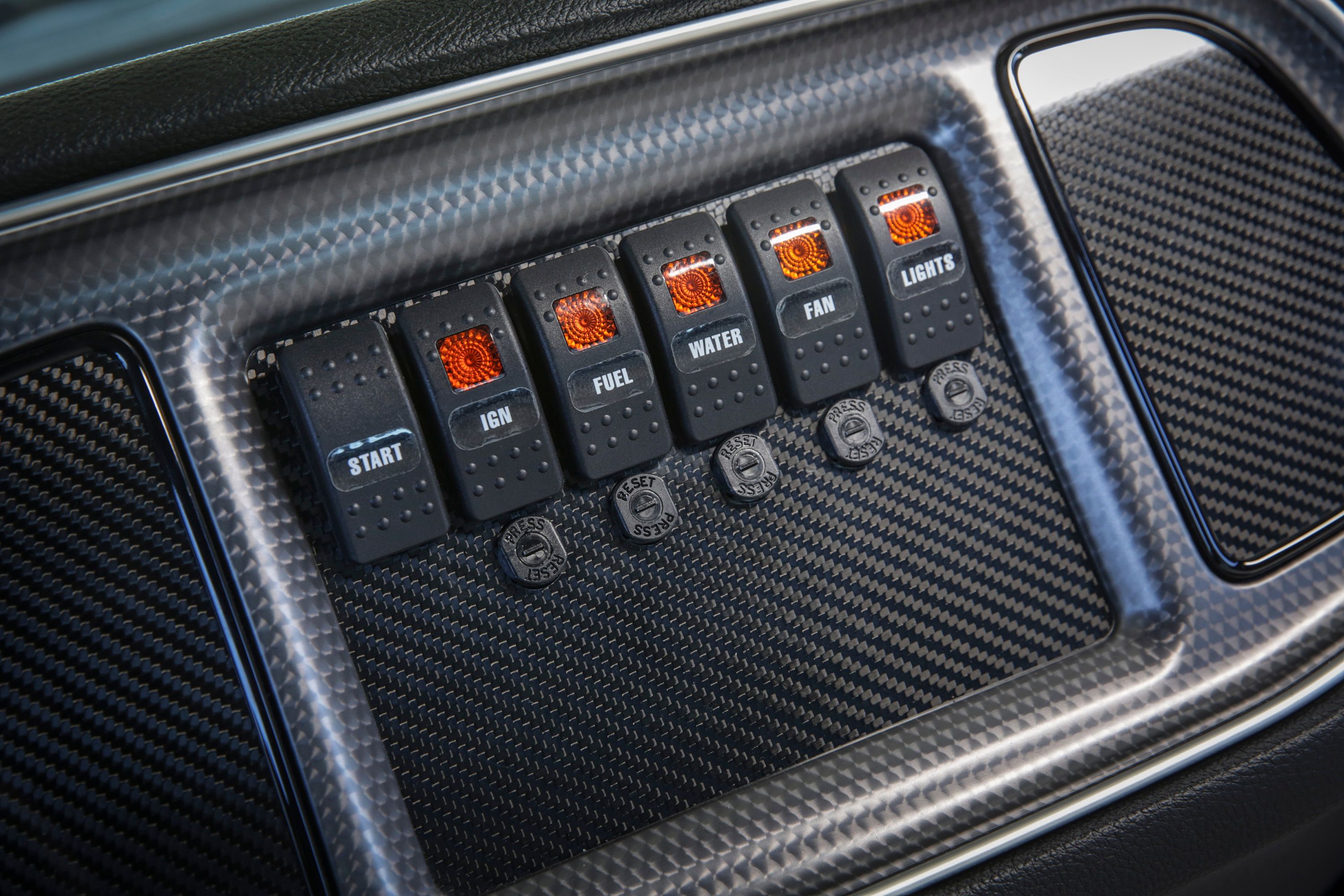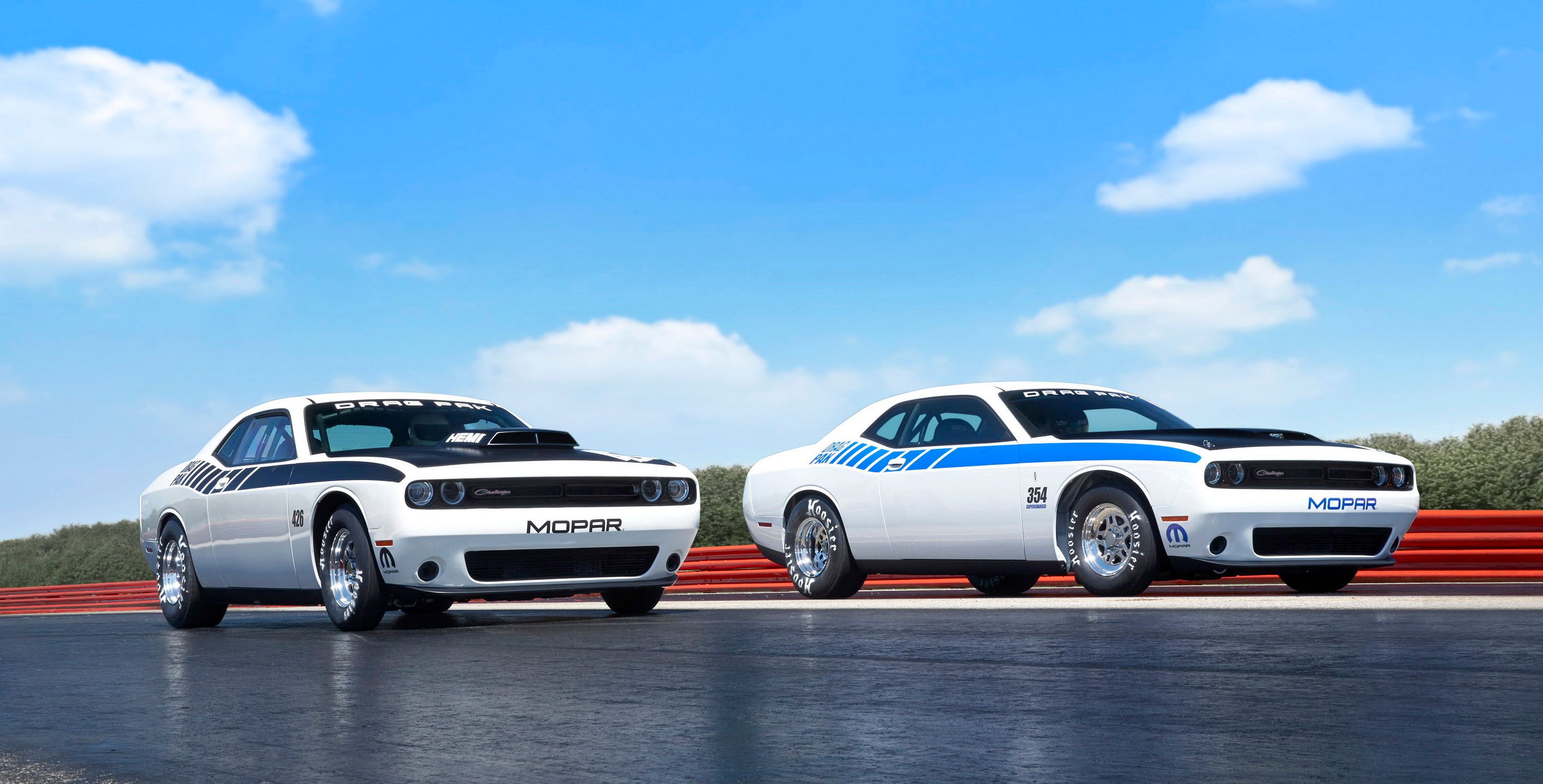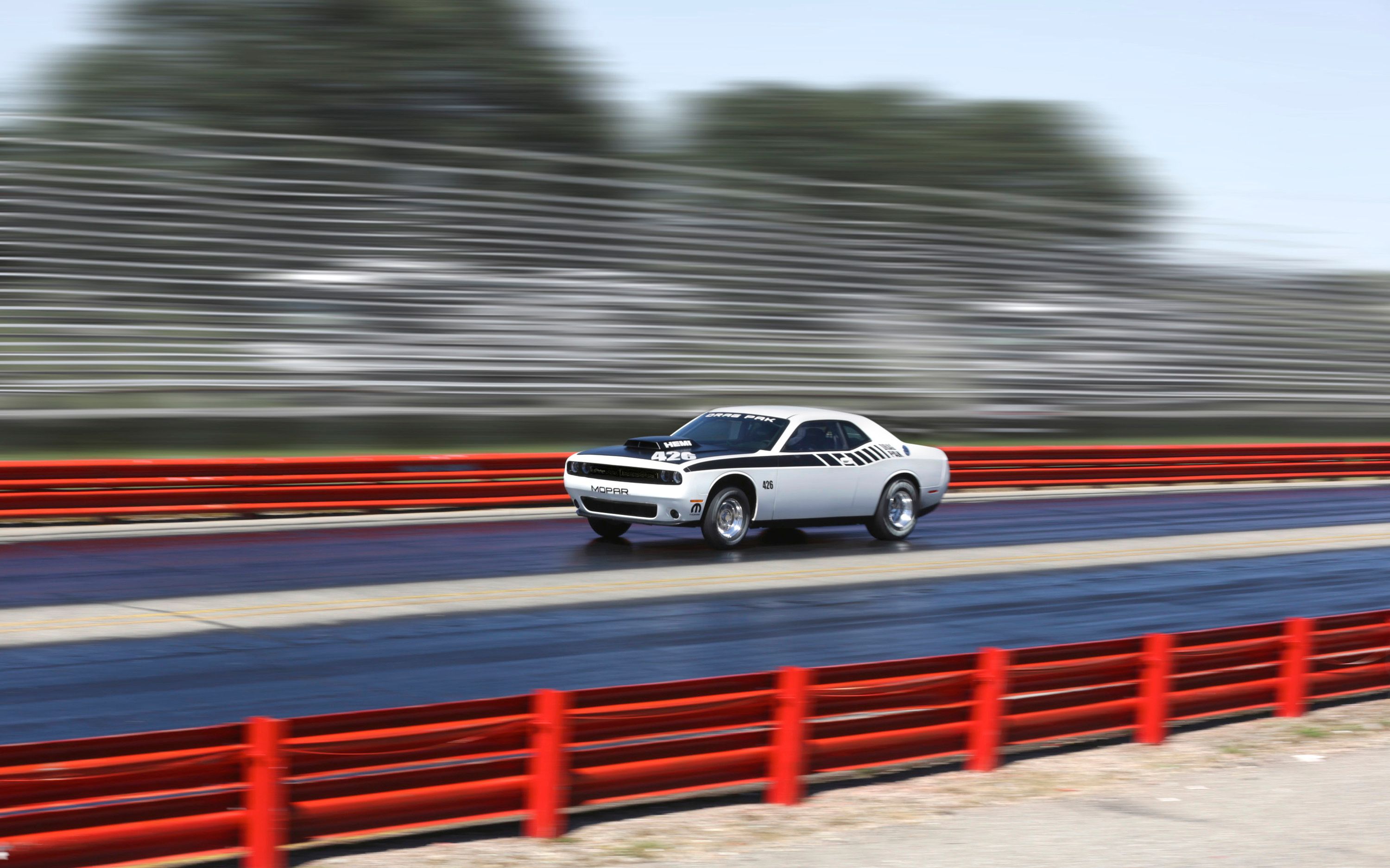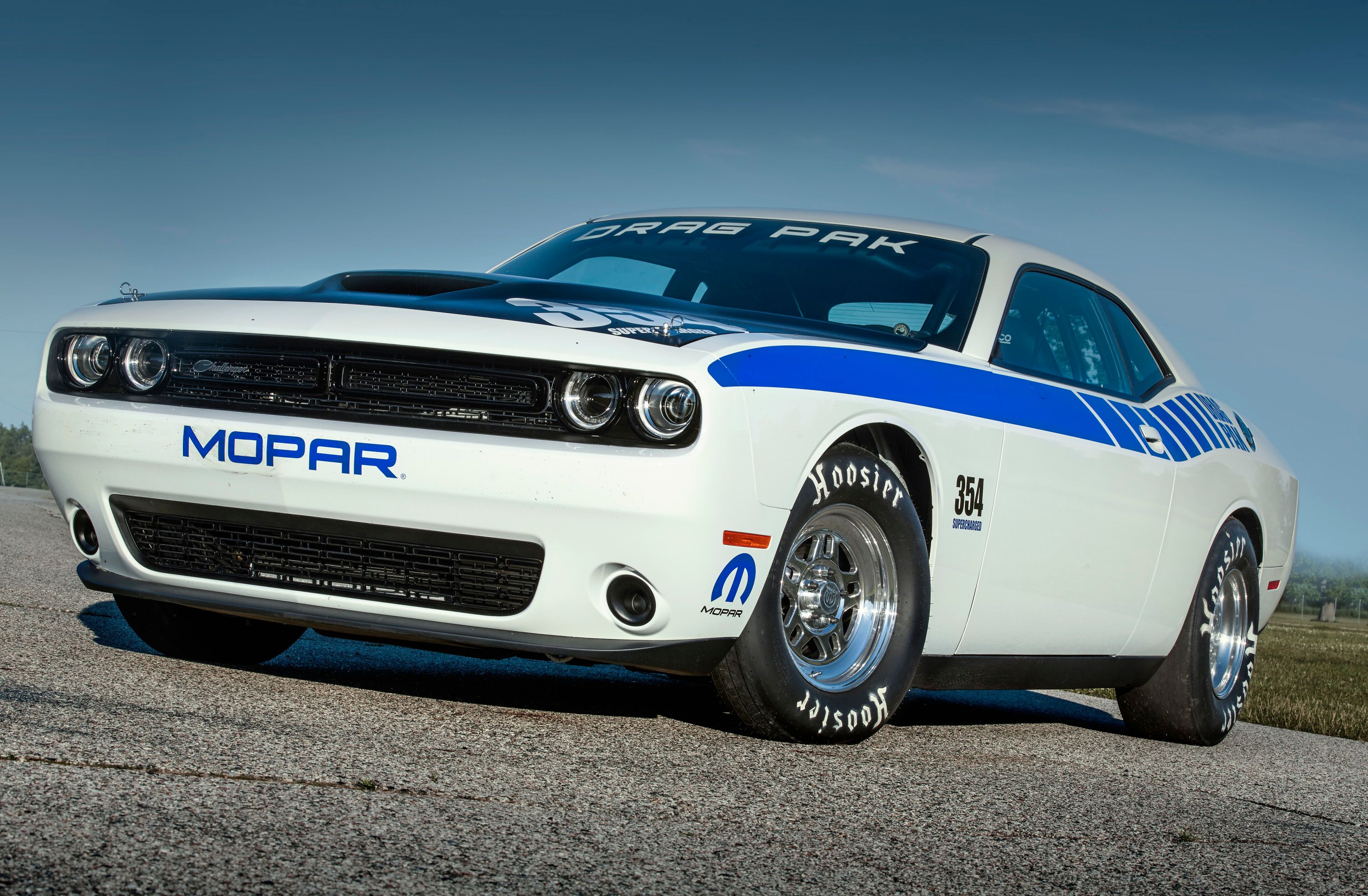In 2014 Dodge->ke28 unveiled the 2015 Dodge Challenger Drag Pak Test Vehicle, a full-fledged factory dragster crafted by the folks over at Mopar. Now, after nearly a year of development, the brand has launched the actual production version that will take on the 2014 Ford Mustang Cobra Jet and the 2015 Chevrolet COPO Camaro on drag strips across the U.S.
The updated Challenger Drag Pak joins the 2014 Dodge Dart Pro Stock car introduced in 2014 and the 2015 Dodge Charger R/T Funny Car launched in 2015 to round off Mopar's efforts in the drag racing scene.
The production Drag Pak retains everything Dodge showcased on the Test Vehicle, but this time around it has given us access to more details. The big news here is the availability of a supercharged V-8 in addition to the all-motor Hemi we saw last year.
"We are extremely pleased with the results obtained during our testing," said Dale Aldo, Mopar Motorsports Marketing Manager. "In the first runs the new Drag Pak ran consistently in the eights (eight-second range) while improving times at the 60-ft. mark and also performing very well in the quarter mile. Once our customers get the car on the track, we feel it’s going to be a clear winner."
Updated 07/23/2015: Mopar announced it is now taking orders for the recently announced Dodge Challenger Drag Pak. The model will be limited to only 60 units: 35 with the first-ever supercharged engine from Mopar and 25 with the naturally aspirated 426 Hemi engine.
Continue reading to learn more about the Dodge Mopar Challenger Drag Pak.
dodge-mopar-challenger-drag-pak
- Make: Array
- Model: dodge-mopar-challenger-drag-pak
2016 Dodge Mopar Challenger Drag Pak
- Make: Array
- Model: 2016 Dodge Mopar Challenger Drag Pak
- [do not use] Vehicle Model: Array
Exterior
Not surprisingly, the production Challenger Drag Pak looks identical to the prototype on the outside. Essentially a factory Challenger->ke249 with drag-specific wheels and a massive scoop atop the engine hood, the Drag Pak stands out compared to the Test Vehicle by means of a new livery. Both are draped in white and feature black hoods, but while the prototype had "Mopar" lettering on the rear fenders, the production version sports iconic Mopar stripes on its sides.
At least the presentation cars do. Customer vehicles will receive their own, customized racing apparel. And I say "presentation cars" because Dodge unveiled one design for each of the two engine options.
The naturally aspirated model comes with black stripes, while the supercharged variant has them finished in blue. Another detail setting them apart is the massive scoop sitting atop the all-motor car. Oddly, the Drag Pak using forced induction has a stock engine hood. Each version also carries a unique identification package featuring "354 Supercharged" and "426 HEMI" graphics.
Laying the power to the ground is a set of 15-inch wheels wrapped in 30-by-9-inch tires. Up front, the muscle car uses 15-inch skinnies and 28-by-4.5-inch rubber. These are identical to those seen on the Test Vehicle.
Overall, the Challenger Drag Pak looks rather mild compared to the Camaro COPO and Mustang Cobra Jet, but make no mistake, Mopar's new drag racer is likely as fast as the competition.
Interior
The interior of the Drag Pak is based on the Challenger SRT's, but spiced up with all the necessary gear needed at the drag strip. Race-spec features include racing front seats with five-point harnesses, a Hurst shifter, safety nets, and an NHRA-spec full roll cage. The muscle car->ke507 also comes with additional switches and Mopar gauges on the dashboard. A weight box and a 12-volt battery are in the trunk.
Drivetrain
Unlike the Test Vehicle, which had a 426 Hemi stuffed under the hood, the production Drag Pak can be had with two engines. The 7.0-liter Hemi V-8 has been retained for production, featuring a Mopar aluminum block with pressed-in steel liners and aluminum cylinder heads. The powerplant uses a custom performance engine calibration, but Dodge makes no mention of its output. It should crank out close to 600 horsepower though.
The second choice is a supercharged 354 Hemi V-8 with a cast-iron block, forged steel crankshaft, and a bespoke Mopar camshaft. The supercharger is a 2.9-liter, Whipple twin-screw unit. Again, there are no output figures to run by. Dodge says that the 354 nomenclature pays homage to the heritage of the early Gen 1 Hemi engines, which originally displaced 354 cubic inches (5.8 liters).
Both engines mate to a race-prepped automatic transmission upgraded from the previous-generation Drag Pak.
The Drag Pak rides on a front suspension specifically developed by Mopar. It features a custom K-Member and bespoke geometry, with double adjustable compression and rebound struts. At the rear of the car there's a four-link suspension with Panhard bar, a 4-inch solid axle with 9-inch aluminum third member, 40-spline gun drilled axles, shocks with adjustable compression and rebound, and an anti-roll bar. The rear axle mounting has been strengthened from the previous Drag Pak model to help the muscle car launch faster and harder.
Drivetrain Specifications
|
426 NATURALLY ASPIRATED |
354 SUPERCHARGED |
|
|
ENGINE |
||
|
Block |
Mopar® aluminum block with pressed-in steel liners |
Mopar cast iron block with steel main caps |
|
Bore, Stroke |
4.125” x 4.000” |
4.060” x 3.400” |
|
Crankshaft |
Forged |
Forged |
|
Rods |
Forged H-beam |
orged H-beam |
|
Pistons |
Forged 2618 alloy |
Forged 2618 alloy |
|
Camshaft |
Mopar spec with 0.675” lift |
Mopar spec with 0.675” lift |
|
TRANSMISSION: Automatic |
TH400 with SFI case |
TH400 with SFI case |
|
TORQUE CONVERTER |
8” Race Converter |
8” Race Converter |
|
VALVETRAIN |
||
|
Tappets |
Mechanical Roller |
Mechanical Roller |
|
Rocker Arms |
1.8/1.85:1 Ratio |
1.6 Ratio T&D Steel Roller |
|
Valve Springs |
Conical style |
Conical style |
|
Cylinder Heads |
Aluminum; 2.20” I, 1.65” E |
Aluminum; 2.145” I, 1.660” E |
|
Oil Pump |
Internal Wet Sump |
Internal Wet Sump |
|
Oil Pan |
Fabricated Aluminum |
Fabricated Aluminum |
|
Damper |
ATI Performance Products “Super Damper” - SFI approved |
ATI Performance Products “Super Damper” - SFI approved |
|
Water Pump |
6.2L SRT® Hellcat |
6.2L SRT® Hellcat |
|
Intake Manifold/Induction |
Drag Pak Single Plane |
Whipple 2.9L twin-screw supercharger |
|
Throttle Body |
4 x 2.0” Throttle Bores |
Billet Aluminum, 109mm |
|
HEADERS |
2” x 30” primary with merge collectors |
2” x 30” primary with merge collectors |
|
FUEL SYSTEM |
Aeromotive |
Aeromotive |
|
Gears & Axles |
Strange Engineering 9” aluminum through bolt center section: 40 spline, gun drilled axles |
Strange Engineering 9” aluminum through bolt center section: 40 spline, gun drilled axles |
|
Differential Gearing Driveshaft |
4.57:13.5” diameter with 0.125” wall and 1350 Spicer U-joints |
4.11:13.5” diameter with 0.125” wall and 1350 Spicer U-joints |
Prices
The price for the new Challenger Drag Pak is $99,426, for which racers will get to take home the naturally aspirated 426 Hemi version. The supercharged model is priced at $109,354. Dodge didn't say whether production of the Drag Pak is limited to a certain number of cars, which is what both Ford->ke31 and Chevrolet->ke199 did with their factory dragsters. Annual production of the COPO Camaro is limited to only 69 units, while the previous Mustang Cobra Jet was available in just 50 examples.
Competition
Ford Mustang Cobra Jet
The 2014 Mustang Cobra Jet based on the fifth-gen car may no longer be available for purchase, but it remains a force to be reckoned with at the drag strip. Motivated by a 5.0-liter, Coyote V-8 with a 2.9-liter supercharger strapped to it, the Cobra Jet is good for nearly 600 horsepower. Limited to only 50 units in 2014, the Cobra Jet retailed for $97,990. All 50 units were sold in a matter of months.
There’s no official word on a new Cobra Jet based on the sixth-gen Mustang,->ke428 but Ford Racing is likely to build one sooner than later, despite withdrawing from the scene. Of course, the Blue Oval would have to ditch the new independent suspension for a solid rear axle.
You can read our review here.
Chevrolet COPO Camaro
Revived in 2012, the COPO Camaro has received yet another update for 2015, marking the launch of the last factory dragster based on the fifth-generation muscle car. A lot more menacing than the Challenger Drag Pak, particularly because of its massive hood bulge, the COPO Camaro also sports flared fenders, modified side skirts, and a rear spoiler.
Unlike both the Cobra Jet and the Drag Pak, the COPO Camaro was offered with no fewer than four V-8 engine options. A 350-cubic-inch (5.7-liter) unit cranks out 350 horsepower, while a 396-cubic-inch powerplant (6.5-liter) sends 390 horses to the rear wheels. The largest V-8 on offer is a 427 (7.0-liter) rated at 430 horsepower. However, the 427 isn't the most powerful option. That privilege goes to the Supercharged 350, a 5.7-liter V-8 with a 2.9-liter Whipple supercharger on top. The combo delivers 530 horses. The naturally aspirated units mate to either an ATI Racing TH400 automatic or a four-speed, G-Force manual transmission, while the supercharged engine uses a modified TH400 autobox to spin the rear wheels.
Only 69 COPO Camaros were made for the 2015 model year and sold for nearly $100,000 each.
Read our full review here.
Conclusion
It's not at all surprising that last year's Drag Pak Test Vehicle evolved into a production car, and it's great to see Dodge return to the drag strip with an updated muscle car. With both Ford and Chevrolet out of the game as far building new factory dragsters goes (until further notice), the Drag Pak is essentially the only choice on the market right now. However, the COPO Camaros and the Mustang Cobra Jets are still out there racing, which means the Challenger won't have it easy in NHRA's Stock and Super Stock classes.

